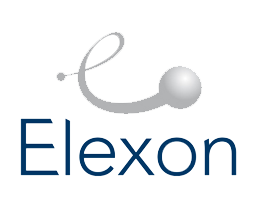Rio Tinto joins forces with CRCMining, Newcrest Mining and Elexon Electronics in the development of a cutting-edge, real-time tracking system for material within block caves, on target to be operational in 2014.
Read more on CRCMining’s website.
Rio Tinto joins forces with CRCMining, Newcrest Mining and Elexon Electronics in the development of a cutting-edge, real-time tracking system for material within block caves, on target to be operational in 2014.
Read more on CRCMining’s website.
Source: Mining Magazine, September 2013
Sub-level caving is a highly efficient, top-down, underground bulk mining method. Recent developments in sub-level cave mining have advanced the understanding of the technique and its production performance, which allow it to now be considered as a highly viable alternative to open stoping and, in some cases, even to block caving. In addition to a low unit cost, sub-level caving offers the following advantages over open stoping and block caving:
Historically, mining companies have been deterred from using sub-level caving because it involved significant uncertainties around cave propagation and ore flow.
Read the rest of the article published in the September 2013 edition of the Mining Magazine.
The mining industry is in the dark when it comes to an in-depth understanding about the mechanisms of underground mining methods based on caving, however, there is a smart solution that is addressing the issue.
It is called the Smart Marker system, developed by Elexon Mining; a company with a strong focus on creating innovative value-adding solutions to assist mining companies to improve ore recovery performance in underground mines, with a particular focus on block and sub-level caves.
One of the big issues with caving is that you don’t see what you are mining; you only see the ore when it reaches the draw points where it is collected. The consequences of unplanned material recovery are ore loss and dilution, which both of have a significant impact on productivity, safety and profit.
“The Smart Marker has the ability to measure ore flow from underground mines electronically, in particular sub-level and block caving operations,” Elexon product manager Simon Steffen said. The Smart Marker system is a blast resistant, long-life Radio Frequency Identification (RFID) device that is installed in the ore body of sub level or block cave mines. “It transfers its unique identifiers (ID’s) to the Smart Marker System Readers when extracted with the ore by a Load Haul Dump (LHD) machine.”
The reader automatically detects, logs and time-stamps the Smart Marker detections as the Markers are extracted with the ore at the production level. The overall system collates both the installation and the extraction data. “The movement of the rock is analysed based on the Markers’ original positions and where and when they are extracted,” Mr Steffen said.
Major miner Rio Tinto played a vital role in the development of the Smart Marker system with Elexon. “We recognised the importance of this technology for our operations, so we were very keen to be involved,” Rio Tinto geotechnical engineer Andre van As said.
Meanwhile, before the Smart Marker, Rio used a “Dumb Marker” system, which was basically a piece of steel with an identification tag. “Unfortunately the recovery success was low,” Mr Van As explained.
Mr Steffen said it was important to understand what was going on in the cave, as the mining company faced potential risks economically if the project went off track. The Smart Marker system allows companies like Rio Tinto to not only improve its current mining operations, but future ones as well. “We have improved our predicted models based on the data we get from the Smart Marker system,” Mr Van As said.
The team at Elexon believes the Smart Marker system has the ability to bump up the output from an underground mining operation based on the insight it is able to provide. Aside from Rio’s Northparkes mine, the Smart Marker system is currently being used at mining operations in Australia, North America, Sweden, Chile and Indonesia.
By continuing to browse you agree to the storing of first and third-party cookies on your device to enhance site navigation, analyse site usage, and assist in our marketing efforts.
OKLearn moreWe may request cookies to be set on your device. We use cookies to let us know when you visit our websites, how you interact with us, to enrich your user experience, and to customize your relationship with our website.
Click on the different category headings to find out more. You can also change some of your preferences. Note that blocking some types of cookies may impact your experience on our websites and the services we are able to offer.
These cookies are strictly necessary to provide you with services available through our website and to use some of its features.
Because these cookies are strictly necessary to deliver the website, you cannot refuse them without impacting how our site functions. You can block or delete them by changing your browser settings and force blocking all cookies on this website.
These cookies collect information that is used either in aggregate form to help us understand how our website is being used or how effective our marketing campaigns are, or to help us customize our website and application for you in order to enhance your experience.
If you do not want that we track your visist to our site you can disable tracking in your browser here:
We also use different external services like Google Webfonts, Google Maps and external Video providers. Since these providers may collect personal data like your IP address we allow you to block them here. Please be aware that this might heavily reduce the functionality and appearance of our site. Changes will take effect once you reload the page.
Google Webfont Settings:
Google Map Settings:
Vimeo and Youtube video embeds:
